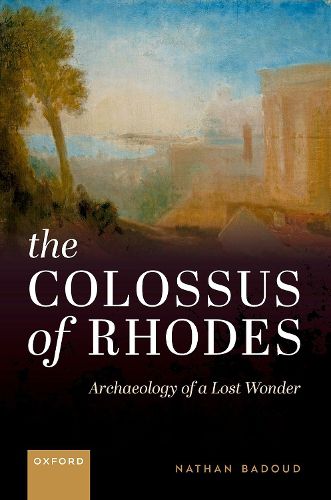Readings Newsletter
Become a Readings Member to make your shopping experience even easier.
Sign in or sign up for free!
You’re not far away from qualifying for FREE standard shipping within Australia
You’ve qualified for FREE standard shipping within Australia
The cart is loading…






The Colossus of Rhodes is both the most famous and the least well-known monument of Ancient Greece. Numbered among the Seven Wonders of the World, this bronze statue of the god Helios, thirty-four metres in height, was created by the sculptor Chares of Lindos between the years 295 and 283 BC, only to be destroyed by an earthquake in 227 BC. The legends which have spread after its collapse seem so strange and contradictory that specialists in Greek sculpture have been dissuaded from investigating the topic. Nathan Badoud publishes the first comprehensive study devoted to the Colossus. His book mobilises a large array of sources, ranging from antiquity to the present day. It proposes an intellectual excavation through the layers of the literary, artistic, and scientific tradition. It envisages the statue in its religious, political, and topographical contexts. It explores its function, its technique, its appearance, its meaning, and its location. It reconsiders the beginnings of the Hellenistic world, marked by the emergence of Rhodes as an imperial power, embodied by the Colossus.
$9.00 standard shipping within Australia
FREE standard shipping within Australia for orders over $100.00
Express & International shipping calculated at checkout
The Colossus of Rhodes is both the most famous and the least well-known monument of Ancient Greece. Numbered among the Seven Wonders of the World, this bronze statue of the god Helios, thirty-four metres in height, was created by the sculptor Chares of Lindos between the years 295 and 283 BC, only to be destroyed by an earthquake in 227 BC. The legends which have spread after its collapse seem so strange and contradictory that specialists in Greek sculpture have been dissuaded from investigating the topic. Nathan Badoud publishes the first comprehensive study devoted to the Colossus. His book mobilises a large array of sources, ranging from antiquity to the present day. It proposes an intellectual excavation through the layers of the literary, artistic, and scientific tradition. It envisages the statue in its religious, political, and topographical contexts. It explores its function, its technique, its appearance, its meaning, and its location. It reconsiders the beginnings of the Hellenistic world, marked by the emergence of Rhodes as an imperial power, embodied by the Colossus.